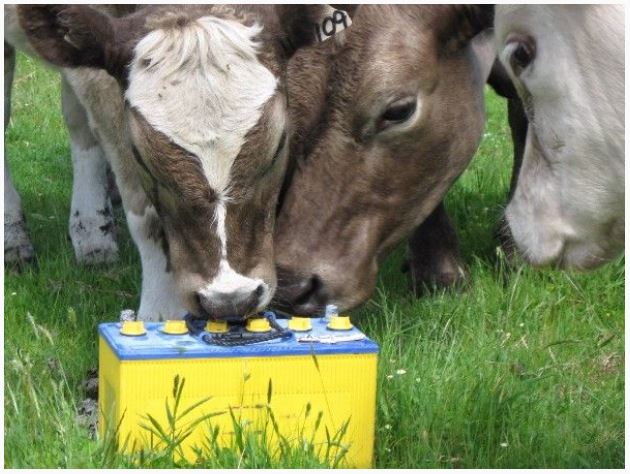Lead a risk to livestock and people
 PRODUCTION ADVICE - FEBRUARY 2020 - ANIMAL HEALTH
PRODUCTION ADVICE - FEBRUARY 2020 - ANIMAL HEALTH
By Linda Searle
District Veterinarian
Have you ever stopped to think about what dangers lurk in your paddocks? While you might not think of an old battery as being particularly dangerous, they can cause issues for both you and your stock. Lead is sweet and can actively be sought by livestock, particularly cattle. This risk increases when feed is light, as animals will go wandering for a pick, especially around sheds and dumps. Less ground cover can unearth hidden batteries, particularly near pumps, fences or old cars. Batteries are particularly problematic as the acid conditions alter the lead, making it easier to absorb when eaten.

- old lead paint, either on old buildings or paint cans
- linoleum
- sump oil
- silage contaminated by lead shot
- caulking putty
- leadlight windows
- lead pipe joins
- lead weights
- fishing sinkers.
Too much lead can be deadly to stock. Sometimes the first sign of an issue is dead stock, particularly inquisitive yearlings. This is often the case with young, inquisitive cattle that explore the environment by tasting it. Other symptoms of lead poisoning include blindness, which is often noticed when livestock bump into things and walk with a high stepping gait. Sometimes livestock show muscle twitches, especially around the face. They can also have a paralysed tongue, circling and star gazing. These symptoms can look the same as other diseases such as plant toxicity, polioencephalomalacia (PEM) or grass tetany, so you should call a vet to diagnose the illness. Some animals may not show signs but still have a residue issue.
Lead will accumulate in the liver and kidneys and can remain elevated for months. This makes the animals unable to enter the food chain until the lead has reduced to a safe level, which can take a minimum of one year and potentially longer. Cases of lead toxicity are followed up by district vets in NSW, usually resulting in the testing of all the stock with possible exposure.
More information can be found on the Primefact - Lead affected cattle, or by calling your local district vet.